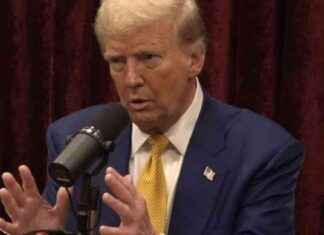At the Gateway Plaza at the southern tip of Mumbai, the tourist hub of the West Indian coastal metropolis, a clash of the worlds. Mumbai’s colonial Gateway from the 20s, a stylistic arch of triumph, is for tourists in India about what is the Brandenburg gate for those in Germany: the number one tourist attraction, at the top of the check list to be processed. Hundreds of Indian families squat, so in the afternoon at 32 degrees Celsius on the ground and improvise a picnic with your own Snacks. Yellow-black Taxis and red buses, for the purpose of better ventilation without the window panes, constantly up and down, sinister diesel steam ausstossend. Hawkers sell everything visitors in the holiday mood, the sense could stand to loose from the Indian Masala Chai and balloons on Glaceschleckereien, water and pineapple go lottery, mobile phone, sticks, sunglasses. An Indian girl, mid 30’s in the Golden-yellow Sari sits cross-legged, barefoot on the ground and leaves from the trunk of a squeaking green toy gun in the elephant form bubbles bubbling: 100 rupees soap the piece, about 1.40 francs.
On the southwest side of the square is the most famous Hotel in the 22-million-metropolis, the Taj Mahal Palace, 115 years ago in the pretty Bombay-Gothic style, with a photogenic red-brown Pseudo-Renaissance cupola and decorative palm trees. Vis-à-vis, with views of the from the Portuguese “bom bahia” baptized “good Bay”, a twelve-Meter-high statue of Shivajis, the national hero of the local people of the Marathas.
The “Maximum City”
Foreign visitors are the identify in the tourist heart of Mumbai easily to the bare calves for a woman and a man, apply in large Parts of India as slightly indecent, or at least childish. Further to the above, many Western women are equipped within a few hours after arrival on the Arabian sea with local accessories: batik scarf, Walla-Walla-trousers, embroidered sandals. Many Europeans feel the cocoon of a luxury car for the first Time from the air-conditioned, Comfortable hotels, are obviously nervous, insecure, irritable. A Mittsechzigerin in a white summer dress, a French accent feels so of Street vendors being harassed, that you used the English F-word too liberal and loud.
Mumbaikars call their city, and with good reason like “Maximum City”. The capital of the Federal state of Maharashtra, according to residents, more than twice as large as Switzerland or the Big Apple, New York. As almost all the major cities of South Asia, Mumbai continues to grow rapidly, so that it has beyond India in the case of many the reputation of being a Juggernaut, an urban monster. Can you go there? Of course you can. You should even. But admittedly, Mumbai provides costume some of the requirements to the nerves.
in Spite of great poverty, a world city
As the whole of India, the city is sensational, dirty, land, water and in the air. The poverty of large parts of the population is obvious. In particular, in the important tourist districts, beggars and cunning villains pouncing on the visitors from the West. The climate is hot in most months of the tropical, sultry, extremely physically stressful variety. In short: The warning that it might be a bit much, is understandable.
enlarge map
Nevertheless, Mumbai is a world even today, the city that plays in a League with urban icons as New York, London or Hong Kong. What is the Wall Street in Manhattan, is here the Dalal Street, where the Mumbai Stock Exchange is located in the Phiroze-Jeejeebhoy Tower, according to market capitalization, a significantly larger stock exchange than those in Zurich. Because of the spectacular architecture in the historic centre of the city with the world’s unique mixture of Victorian neo-Gothic and Oriental style elements, added with a pinch of Mogul splendor. The film studios of Bollywood in the North of the city, promise of Glamour and are the reason why the “Maximum City” for hundreds of millions of Indians is a place of longing. Even the city beaches are there in Chowpatty, and in the district of Juhu. And from the Gateway Plaza to colorful double-deck ferries in less than an hour to Elephanta island with its Hindu temples, one of three world heritage sites of the city. In addition to the CST station in Mumbai famous for its Gothic and Art – Deco since July-buildings on the Unesco list. Reasons enough for a visit.
instructions on how to stroll through the city
can the rules of Four-fist for Mumbai-novices be helpful. First, you should Plan to have a buffer zone and a place to retreat. Means: when you Book your settling-in a good or even a top hotel. Especially those who travel for the first Time to India, are soon overwhelmed as the private retreat helps. Secondly, Pack a pair of earplugs. The help and relax (and do not get in India anywhere). Tip three: Is secured to the retreat, fearless, duty – nothing like out on the streets, where life rages! Between the city map triangle-Colaba, Nariman Point and CST in Südmumbai you can do everything on foot. And finally, number four: eat with common sense, but with experimentation. Among Mumbai’s culinary classics Vada Pao, is a vegetarian Burger with Chili, Mumbai Duck, a small fish with zig-zag teeth, and Pomfret, a fish.
In the year 2050, a forecast of the life in the 42 million people in the Metropolitan area of Mumbai, 2100, the 67 million, and by then the nickname “Maximum City” will be heard around the world. Long before that, probably within three years, will be completed in the next Shivaji equestrian statue. You will stand on an artificial island and those on the Gateway Plaza to a proud 200-Meter overhang, which is then the highest monument in the world. Fits perfectly to the “Maximum City”.
(editing Tamedia)
Created: 20.12.2018, 17:40 PM







